How Do Oysters Make Pearls and Why?

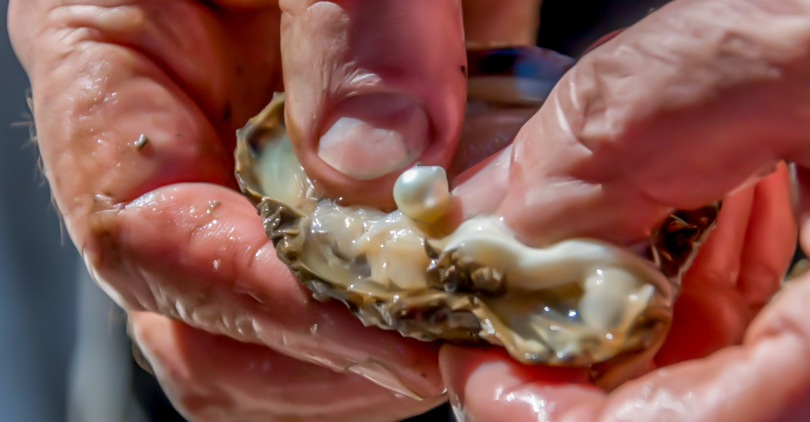
Have you ever wondered how oysters create pearls? Join us as we delve into the fascinating world of pearl production in these remarkable creatures.
Pearl oysters – known to some as ocean gems – possess an extraordinary skill. They can transform something that irritates them into something beautiful.
In hidden workshops beneath the waves, these mollusks perform a kind of alchemy rarely found outside fairy tales: they make pearls. But why do oysters produce pearls – and how?
The answer lies in their built-in defense mechanism against foreign objects entering their shells. It's a feat of adversity-to-elegance juggling, which unfolds over several stages and reveals hidden depths below the surface.
Let us unravel this natural marvel together – prepare to be astounded by why and how oysters fashion pearls!
Why Do Oysters Make Pearls?
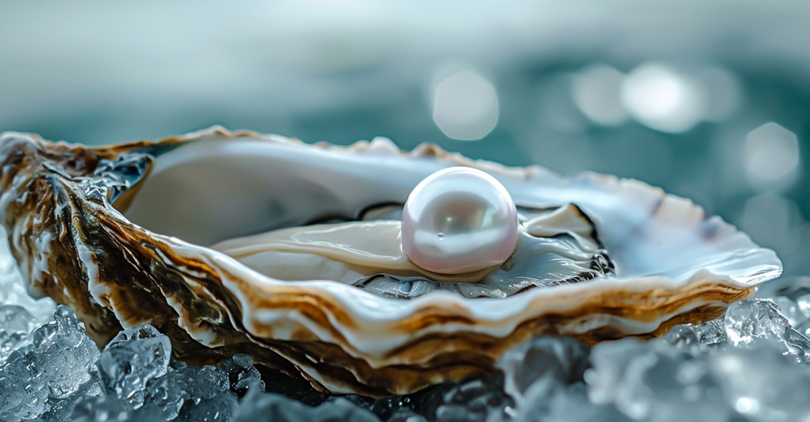
Oysters create pearls to protect themselves from irritants or foreign objects inside their shells, like parasites or grains of sand. When an oyster feels something irritating it, the animal knows how to defend itself. It starts covering the invader with layers of nacre, the stuff that makes up a pearl.
As well as encasing the intruder in shiny stuff—an iridescent substance called mother-of-pearl—the oyster also smooths off any rough edges so it doesn't get hurt as much. After a while, if the creature keeps depositing nacre (and only if it does!), then voilà—a pearl forms.
Even though they might just be considered a byproduct of irritation, pearls are both rare and beautiful. Humans have been fascinated by these gemstones for centuries—and it turns out there's more behind their creation than we realized: self-defense!
Process of Pearl Formation
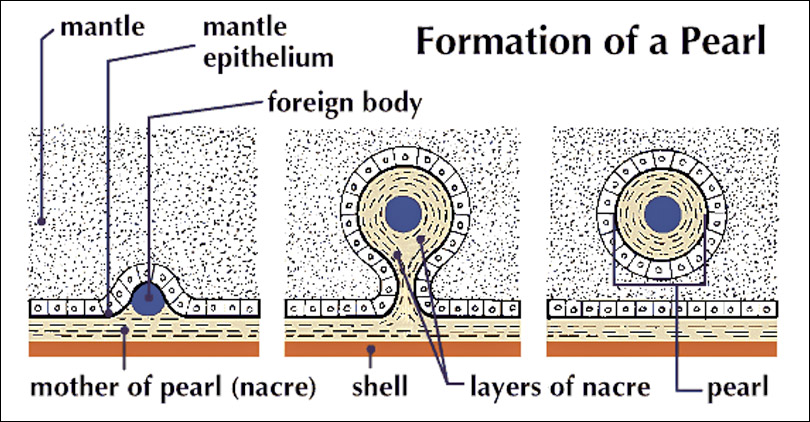
When pearl oysters detect something foreign—be it a parasite, a bit of grit, or something else entirely—inside their shells, they don't like it. But rather than simply try to get rid of the irritant, they do something remarkable.
They use specialized tissue called mantle to secrete a mixture of proteins and calcium carbonate (what we call nacre or mother-of-pearl), coating whatever doesn't belong in multiple layers.
As time passes, more layers are added in concentric circles around the invading object; eventually, this smoothing process makes the rounded shape we associate with pearls.
It's amazing to consider that something so beautiful and valuable can grow out of annoyance—proof once again that if you delve deeper, nature always has some surprises up her sleeve!
The Role of Calcium Carbonate
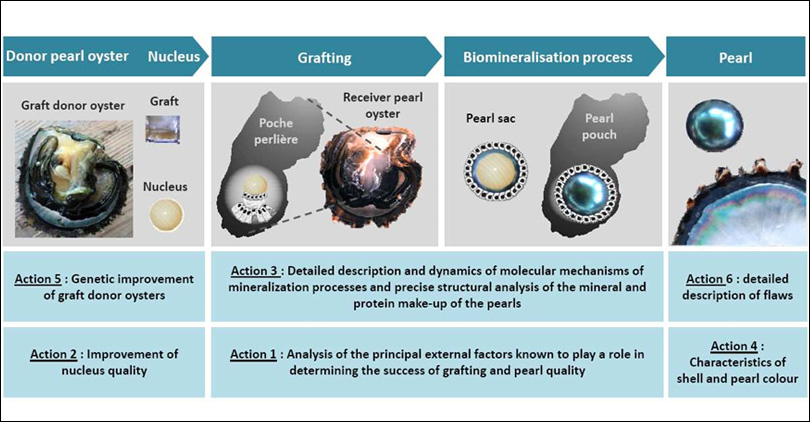
Like all mollusks, oysters require calcium carbonate—a mineral abundant in both sea and on land—to form pearls. When foreign matter enters an oyster's shell, it triggers a fascinating response. The animal begins secreting nacre—layers of which will enrobe the irritant and eventually develop into a pearl.
But there's more to the story—much more. As the oyster coats the foreign object with nacre (whose iridescent properties give pearls their luster), minute crystals of calcium carbonate within this substance grow in an orderly fashion, lending strength to what is becoming a gemstone-like structure.
It is the partnership between these two substances that creates such spectacular displays of light and color. Each pearl has its own distinctive hue-dependent hues dance spectra—that seem almost magical.
In fact, these gems are admired because they are fashioned from everyday nuisances that people all over the world covet.
Influences on Pearl Formation

The formation of pearls in oysters is heavily influenced by the environment they live in. Oysters that produce pearls need water with lots of calcium, which means they can make pearls in places like hydrothermal vents.
In these underwater hot springs there is plenty of calcium – exactly what an oyster needs if it wants to turn something annoying inside its shell into a glowing ball of loveliness!
The presence of carbonate alongside other minerals at these vents also helps oysters create nacre, the material that coats pearls, making them shine and shimmer as they do.
This amazing process shows how clever nature can be. Oysters take everything they require from their surroundings to produce something as beautiful and complicated as a pearl – showing once again that the natural world is full of incredibly adaptable intelligence.
It's an interesting example, too, of how symbiotic relationships (where organisms depend on each other) between living things and their environments can result in astonishing outcomes of breathtaking beauty.
Molecular Magic of Oysters
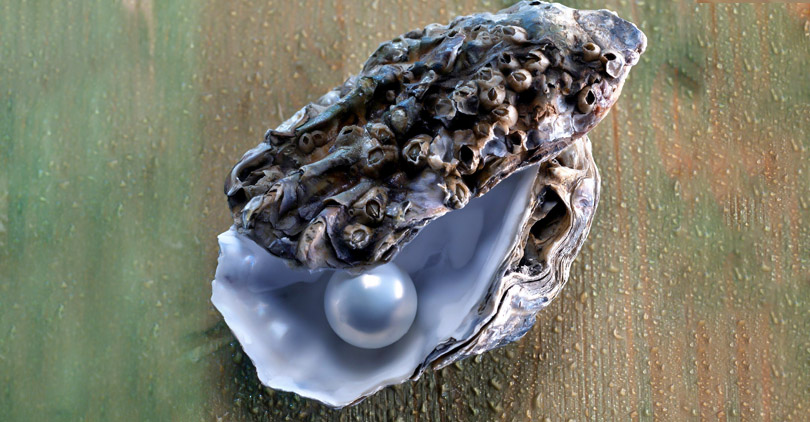
Embarking on the journey of pearl formation, oysters showcase their molecular magic from the tiniest larvae to exquisite gems of the sea. These remarkable creatures meticulously construct their shells.
As if possessed of foresight and engineering prowess, oysters use proteins to organize how layers should be deposited on a scaffolding made by cells that produce calcium carbonate within the shell.
When responding to something irritating or parasitic – an infection perhaps – an oyster will coat it with layer upon layer of nacre, creating over weeks or years a gleaming sphere that might be both beautiful and strong enough to survive being knocked about in the sea surf.
Oysters are artists at work, but we can't see them because they're inside their shells, each one producing something astonishing from almost nothing. And when faced with adversity – difficulty or danger – they transform it into something elegant.
The Wonders of Nacre
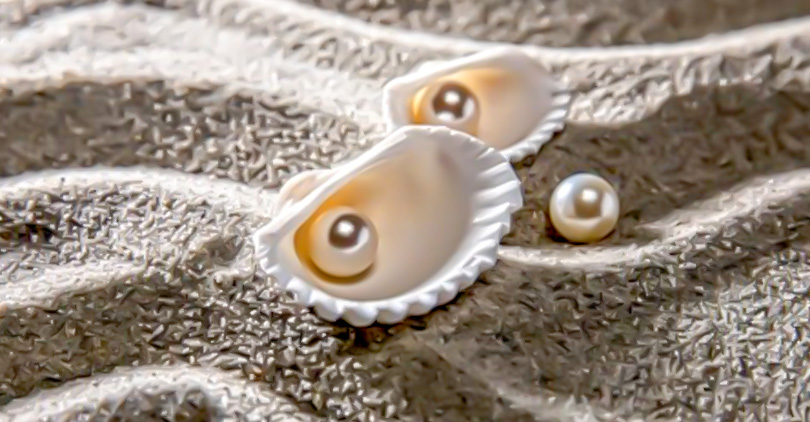
Nacre, which can be called "mother-of-pearl," is found in mollusk shells and has both beauty and strength. The main substance in it is aragonite, a type of calcium carbonate crystal. It looks like it changes color when you see it from different angles – this is called iridescence.
What makes nacre special compared to other materials is its structure: lots of layers with tiny crystals that are arranged very precisely. This not only gives the shells their shiny appearance but also makes them super tough – handy if you're an oyster or clam trying not to get eaten!
But nacre isn't just there for function. Humans have liked how beautiful and sparkly it is for thousands of years – using nacre in art and jewelry because it symbolizes fancy things (like pearl necklaces).
It's incredible that something can look delicate but act so strongly: nature at its most ingenious!
Natural vs. Cultivated Pearls
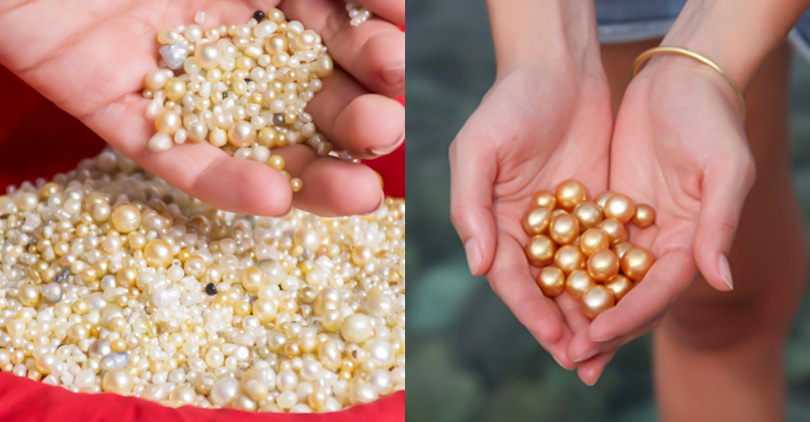
Differentiating between natural pearls and cultured pearls is important if you want to know what makes each type unique and valuable. Natural pearls are incredibly rare treasures that form inside oysters organically when microscopic things like parasites get inside and bother them.
Because they are so hard to find but still beautiful after all this time, natural pearls from the ocean can be worth a lot of money – people who collect jewelry may compete to buy them!
Cultured pearls, on the other hand, are produced by people: technicians implant mollusks with tiny irritants on purpose in pearl farms, where the animals grow these gemstones around those cores.
While cultured pearls occur more frequently than natural and, therefore, cost less, many individuals still appreciate their beauty.
Both types exhibit elegance and taste; however, understanding the distinction—rarity, value, and personal preference—between natural versus cultured helps one make an informed purchase when acquiring these gems for one's jewelry collection!
The Selective Nature of Pearl Production
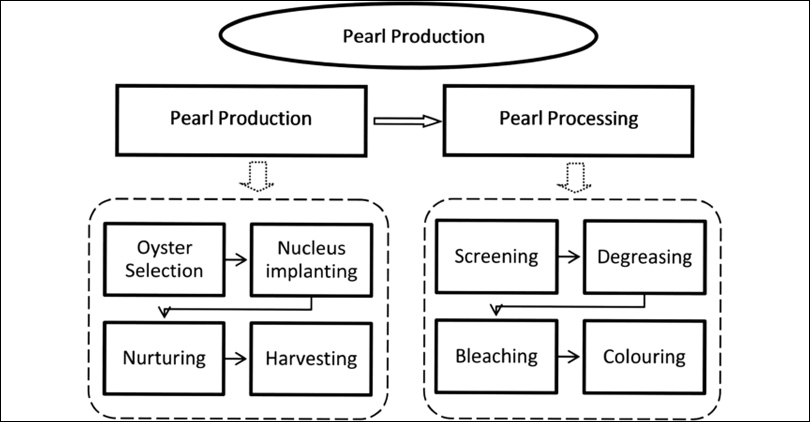
The pearl industry has an interesting problem. Just half the oysters that get irritants will survive to make pearls. It's worth stressing this because it shows how uncertain and difficult it is for pearl farmers to grow these valuable gems.
Not every mollusk that starts growing a pearl from an irritant ends up with something beautiful enough to be used in jewelry – far from it. And even among those that do produce such pearls, only around 5% yield ones that meet the exacting standards needed for them to be processed into strands or earrings.
By subjecting each fine pearl they buy to rigorous testing, jewellers ensure that only beautiful stones of good quality are available on their counters. That is why people who buy them can be confident they look amazing and won't fall apart after a couple of wearings.
As a meticulous selection system is used, only the best pearls make it to market – ensuring every buyer gets an exquisite gem that's been closely checked for quality and beauty.
The fact that only some pearls can be cultured adds an extra element of fascination: it makes these already beguiling objects all the more intriguing – as well as coveted.
Conclusion

Pearls are more than just beautiful jewels; they also represent how clever and strong oysters are because pearls form as a result of oysters' brilliant self-defense strategies.
Each pearl tells a story about resilience and ingenuity: how else could something so delicate come from something so fraught?
Take a moment to consider not only the exquisite beauty of these glowing orbs, which have been harvested for centuries purely for human adornment but also the biology that creates them. It is nothing short of wonderful.
Pearls reminds us that even out of adversity can come creation and transformation: surely there is no better metaphor for jewelry wearers to carry with them.


Leave a Comment